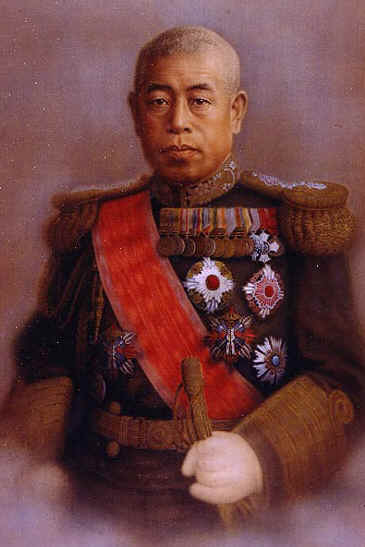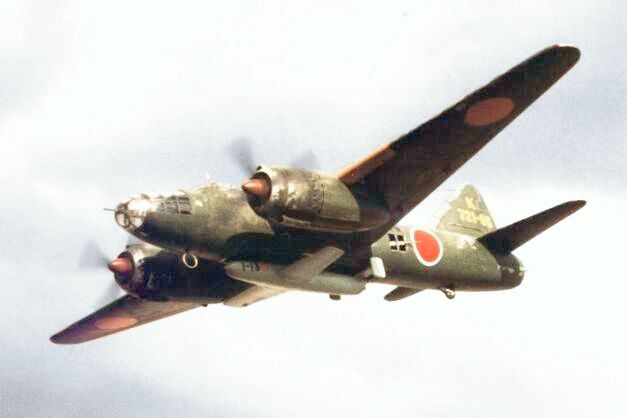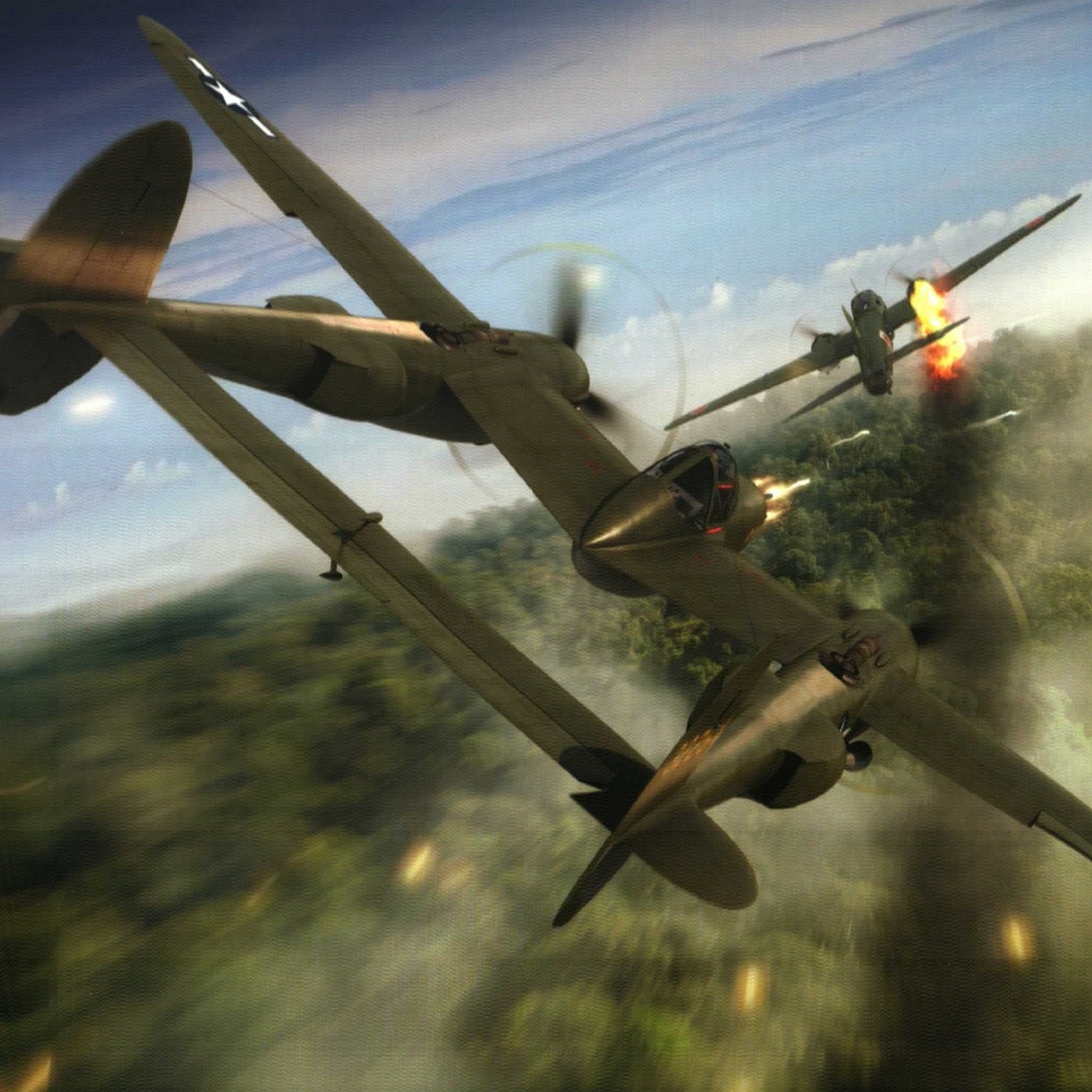Yamamoto’s plane was no longer visible; instead, a towering column of black smoke could be seen rising into the air from the thick jungle
Admiral Yamamoto was the brains behind Japan’s attack on Pearl Harbor, and the war that followed made him a priority target. US codebreakers deciphered Yamamoto’s flight schedule for an upcoming trip to Rabaul in 1943. But it was nonetheless one of the most difficult tasks of World War II for the P-38 Lightning unit that was given the order to track down, intercept, and shoot down his aircraft at a great distance.
On April 18, 1943, six escorting Zero fighters from No. 204 Kaigun Kokutai accompanied the two Japanese Navy G4M (Betty) bombers carrying Admiral Isoruku Yamamoto and Chief of Staff Matome Ugaki as they took off from Lakunai airfield on New Britain’s east coast at 0600 hours. The flight path first touched down at the southern tip of New Ireland as a security concession and to give the commander of the Combined Fleet a glimpse of his deployed forces. It then turned south along Bougainville’s east coast, passing the Japanese bases at Buka and Kieta, before continuing on to Buin.
The Zeros arranged themselves into two flights of three, each in the shape of a “V.” Given that they believed American fighters would only approach from the seaward side, the Japanese kept Bougainville’s mountains to their left. The fighters followed a mile behind them on either side, at an altitude of 8,200 feet, while the bombers maintained a height of 6,500 feet.
Ugaki’s Betty carried its standard armament of three 13mm guns and one 20mm gun, but the squadron leader only requested one belt for each weapon due to the weight of the ammunition boxes. There is absolutely no proof that Yamamoto’s Betty was armed. Japanese operational security was extraordinarily lax on every level. After takeoff, the chief pilot of the aircraft carrying Yamamoto sent a communication to the Ballale base stating that they were “due to arrive 0745.”

Ugaki, who was seated in the captain’s seat directly behind the chief pilot Hayashi, soon fell asleep. The aircraft got its first glimpse of Ballale at 7:30, at which point it started a shallow descent in preparation for landing. “Expect to arrive at Ballale 0745,” Tanimoto wrote on a piece of paper and handed it to the still-half-asleep Ugaki when he was in the copilot’s seat. The lush jungle below could be seen when the formation flew over Bougainville’s west coast.
One of the escort fighters suddenly took off in front of the second bomber. Its wings lowered, and the pilot could be seen pointing in that direction. As one of the escort Zeros got closer to the lead bomber, it picked up speed and quickly descended by pushing its nose down. Hiroshi Hayashi, a Japanese flight petty officer second class serving with the 705th Air Squadron and having spent almost a year in Rabaul, was in charge of the second bomber. Professional outrage was his first reaction; such a rapid loss of height was risky. But his suffering had really just begun.
A flight of 16 P-38 Lightning fighters, flown by Major John Mitchell, from the USAAF 374th and 18th Fighter Groups, had detected the Japanese bombers and was turning to intercept.
It was Doug Canning, flying No. 3 in the flight, who broke radio silence: “Bogeys! Eleven o’clock high!” At that moment, Mitchell spotted two Japanese bombers (not the lone Betty anticipated by the intelligence) crossing the western tip of Bougainville 5 miles away at about 4,500ft in a shallow descent toward Ballale with six Zeros behind them in two flights of three about a thousand feet higher. He replied “Roger,” and “I have ‘em.”
The P-38s were still at wave-top height and making a 90-degree turn toward the Japanese aircraft. Mitchell made a right turn and followed their trail while firewalling his engine to accelerate as quickly as possible. He pulled his own belly tank release while Julius Jacobson, Canning, and Delton Goerke dropped theirs after ordering his pilots to “skin off your tanks.”

Besby Holmes’ tanks wouldn’t detach: “I jigged the release, I checked the circuit breakers, nothing happened. I couldn’t drop them.” He radioed his flight leader Thomas Lanphier (who led the section tasked to attack Yamamoto’s bomber), “Wait a minute Tom, I’ll tear my tanks off, just give me a second.” Holmes drew away from the formation once more out over the water after receiving no answer from Lanphier. He then turned toward the sea and accelerated in the hopes of shaking the tanks loose, “That was a mistake as far as I was concerned,” Mitchell later noted, while showing due deference to Raymond Hine, Holmes’ wingman, who “rightfully followed him to protect him.”
The entire operation appeared to be failing at that point. Mitchell, whose section was in charge of giving the other Lightnings high cover, felt his heart sink as he realized that his fighters would now be facing twice as many bombers than they had originally planned. Even worse, he had no idea which Betty belonged to Yamamoto and was unable to direct his pilots to focus on it.
As he radioed to Lanphier, Mitchell guided his airplane in its ascent to the predetermined CAP height with cold resolve. “He’s your meat, Tom.” Lanphier acknowledged, and the two remaining planes of the killer flight turned toward the eight enemy aircraft on a rising intercept course.
The covering flight kept ascending while staying parallel to the Japanese aircraft. Mitchell was strongly tempted to join the pursuit and level off. “If I had known they weren’t going to send any fighters up to greet the admiral, I would have made the attack. I would have taken over, Lanphier or anyone else be damned. I would have gone in first.” He had opted for the high cover role because he anticipated mixing it up with the Zeros scrambling from Buin. But none of these so much as got off the ground while the interception was in progress — “a big disappointment to me and the rest of the cover flight.”
Therefore, the killer flight would be the main focus of the action. All following sources concur that Lanphier made a climbing turn to the left (to the left of the attacking element) (north by northwest). In doing so, he had come face to face with the three escort Zeros on the formation’s seaward side. By all accounts moving forward, Rex Barber, Lanphier’s wingman, banked sharply right. Mitchell radioed while observing from above, “Get the bombers … damn it all, the bombers!” Neither Barber nor Lanphier would later recall hearing this radio transmission. They were too mission-focused.
Now the accounts start to differ. Over the course of the subsequent few minutes, specifics of what occurred have been the subject of passionate debate for more than 75 years. Each participant went to their grave vowing that their point of view was the only one that mattered, and no version of the story can be reconciled with any other.
The day’s activities appeared to the Japanese to be completely simple. They were ambushed and overpowered. The pilots of the escorting Zeros were fatally late in responding to the threat because they were taken entirely by surprise. They had no idea that American fighters would arrive from behind them at a lower altitude as they flew above the bombers and scanned the southern horizon in front of them. Kenji Yanagiya, one of their number, didn’t know they were being attacked until the flight leader abruptly rocked his wings and dove at full speed.
His first impulse was to divert the P-38s from their intended attack route rather than attempt to shoot them down. From their higher altitude, all six of the Zeros executed a straight dive to position themselves between the bombers and the approaching P-38s. They continued to fire in front of the P-38s in an effort to keep them from closing in on the Bettys rather than firing at the American fighters. The enemy was relentless, however: “They were all firing at the bomber and they were just going in rows, so to speak. They were all firing … Shoot, flip, go down — just like that.”
Aboard the bombers, confusion was total. “What happened?” Ugaki called out to his plane’s captain, who replied “It must be some mistake.” The crew onboard took up battle stations, cleared their guns, and prepared for firing. “For a moment, the wind blowing in and the handling of machine guns and all caused one mixed, disturbing noise,” Ugaki recalled. His bomber made a sudden evasive turn off more than 90 degrees. Having spotted the American fighters, the bomber’s captain, “seeing an enemy plane about to make a dive at us, tapped the shoulder of the chief pilot, directing him to turn left or right.” As they entered their dives, Yamamoto and Ugaki’s aircraft split apart, their separation growing as the No. 1 plane swung to the right and south-southwest toward the shoreline while the No. 2 plane banked east to the left.
As Ugaki’s plane separated from the lead bomber he lost track of Yamamoto before finally locating the C-in-C’s Betty. He was frightened to watch the plane spitting smoke and losing speed as it headed south, now skimming the top of the bush. Ugaki shouted at the pilot before turning back to the air staff officer Muroi, who was waiting on the gangway diagonally behind him, “Follow plane No. 1! Follow plane No. 1!”
Hayashi, who was making frantic escape attempts, had similarly lost sight of the other bomber as he banked and turned the aircraft, at times just using his hands and at other times only his feet. “Tracers flashed by our wings, and the pilot frantically maneuvered to evade the pursuing fighter plane,” Ugaki recalled. “I waited impatiently for the airplane to return to a horizontal position so that I could observe the admiral’s bomber. Although I hoped for the best, I knew only too well what the airplane’s fate would be.” He was right in his prediction. Yamamoto’s plane was no longer visible; instead, a towering column of black smoke could be seen rising into the air from the thick jungle. His diary entry is permeated with his anguish at the time: “Alas! It is all over!”
We Killed Yamamoto is published by Osprey Publishing and is available to order here.
Photo by Adam Tooby via Osprey, U.S. Navy


